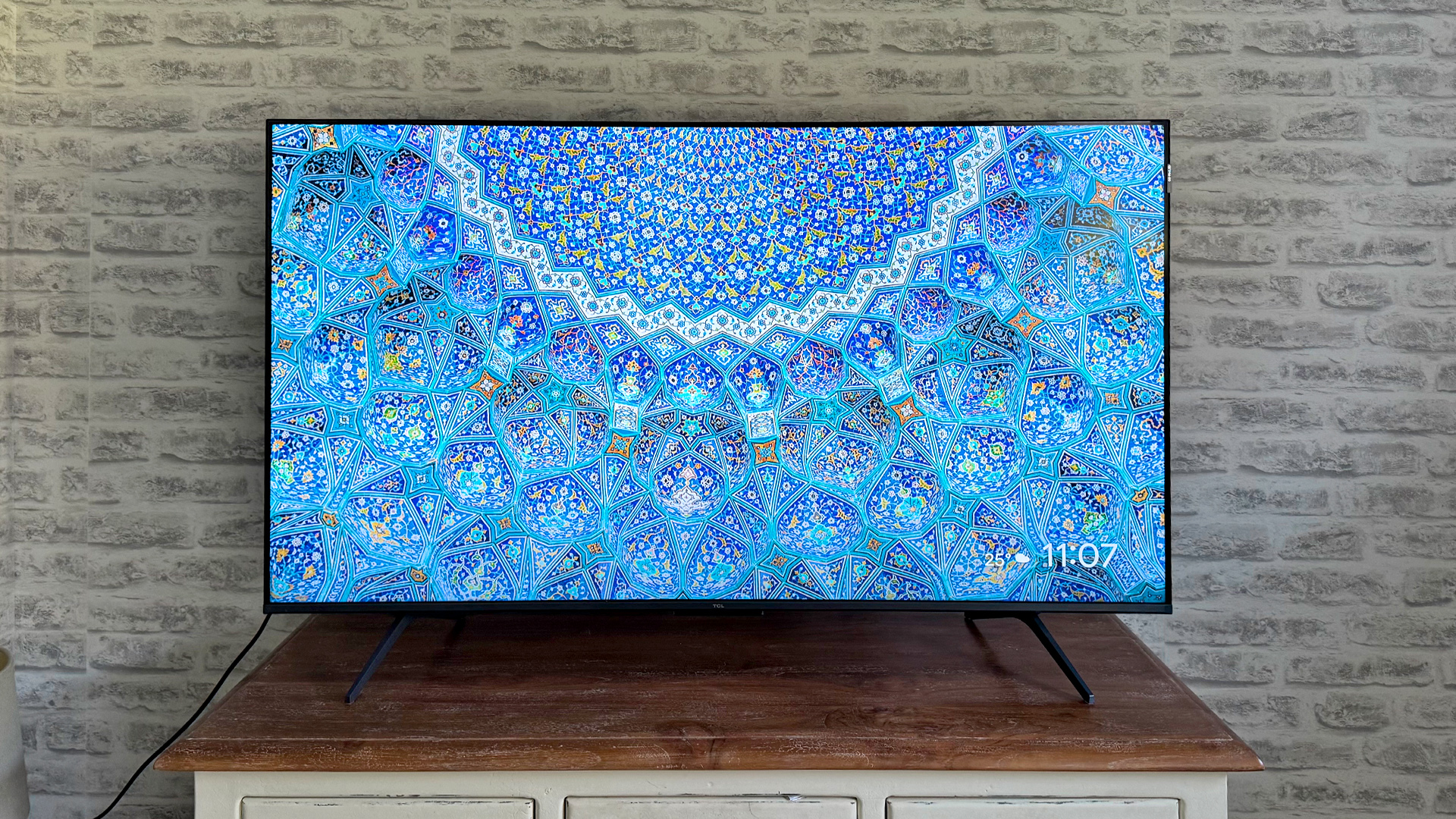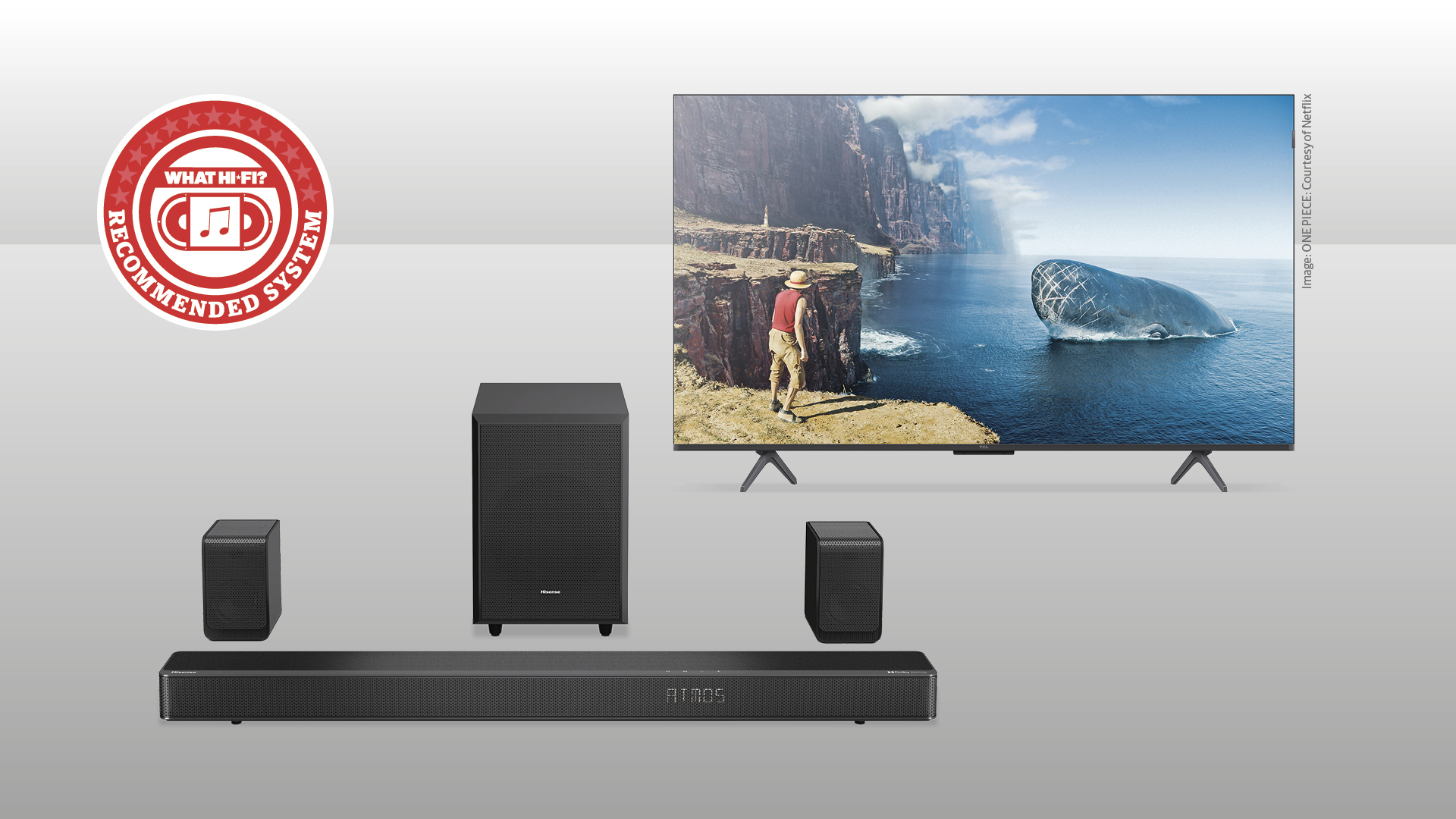What Hi-Fi? Verdict
TCL’s 50-inch C6KS just shouldn’t be as good as it is for this price – it’s hands-down one of the year’s biggest bargains
Pros
- +
Excellent brightness and contrast
- +
Comprehensive HDR support
- +
Outstanding value for money
Cons
- -
No 120Hz gaming support
- -
Mild motion blur
- -
Occasional clipping and colour banding
Why you can trust What Hi-Fi?
No sooner have we had the chance to be wowed by TCL’s new premium C8K TV than we find ourselves faced with something from much lower down the 2025 pecking order.
With features such as Mini LED lighting, local dimming and universal HDR support to its name, the 50-inch TCL C6KS is arguably just as impressive as its flagship sibling, given its vastly lower price.
Price

The TCL 50C6KS costs, at the time of writing, just £419 in the UK, and $590 in Australia (there isn’t a direct equivalent in the US). This pricing would look very affordable on any 50-inch LCD TV, but we’re heading into potential bargain of the year territory when, as we’ll see, this price isn’t just getting you the stripped-back, ultra-basic TV you’d expect.
Similarly affordable 50-inch TVs are rare. You can now, though, get the latest version of the 50-inch Amazon Fire TV Omni QLED for only a little more. The Amazon set also offers comprehensive HDR support, Quantum Dot colour and local dimming, as well as an Amazon-based smart system that some people may feel more familiar with than the Google TV smarts used on the TCL 50C6KS. Amazon’s set deploys significantly fewer dimming zones than the 50C6KS, though, and does not benefit from Mini LED lighting.
Another very different bargain you could consider would be the Sharp 70GK4245K, which remarkably gives you a 70-inch QLED screen for just £489. It isn’t on the same performance level as the 50-inch C6KS, but there’s nothing around for similar money to match it if screen inches for your buck is your main motivation.
One final note here: the C6KS is not to be confused with the C6K. The model without the ‘S’ is higher-spec (most notably in that it features a 120Hz panel) and doesn’t come in a 50-inch size. It’s also predictably more expensive.
On the subject of sizes, the C6KS is available as a 55-, 65- and 75-inch model, as well as the 50-inch version we have before us today. Backlit TVs can vary greatly in quality as you move up the sizes, though, so it’s best not to assume the larger versions will perform as well as this one.
The latest hi-fi, home cinema and tech news, reviews, buying advice and deals, direct to your inbox.
Design
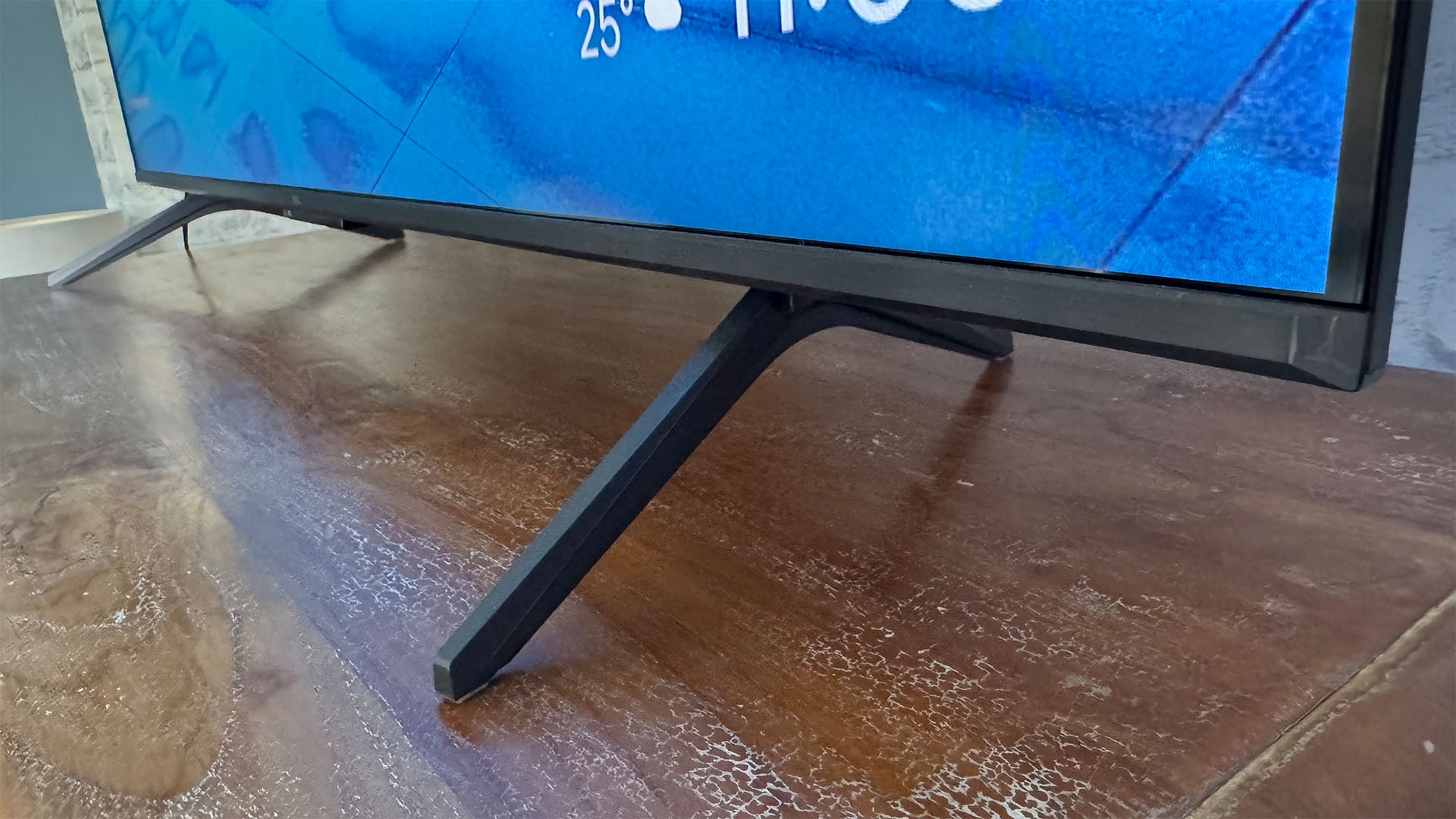
The 50-inch C6KS looks decently attractive for its money. The frame around the screen is narrow enough not to become a distraction from the picture or take up any more space in your room than necessary, while the shiny black finish of the left, right and top edges looks crisp and contrasts attractively with the glossy silver finish of the bottom edge.
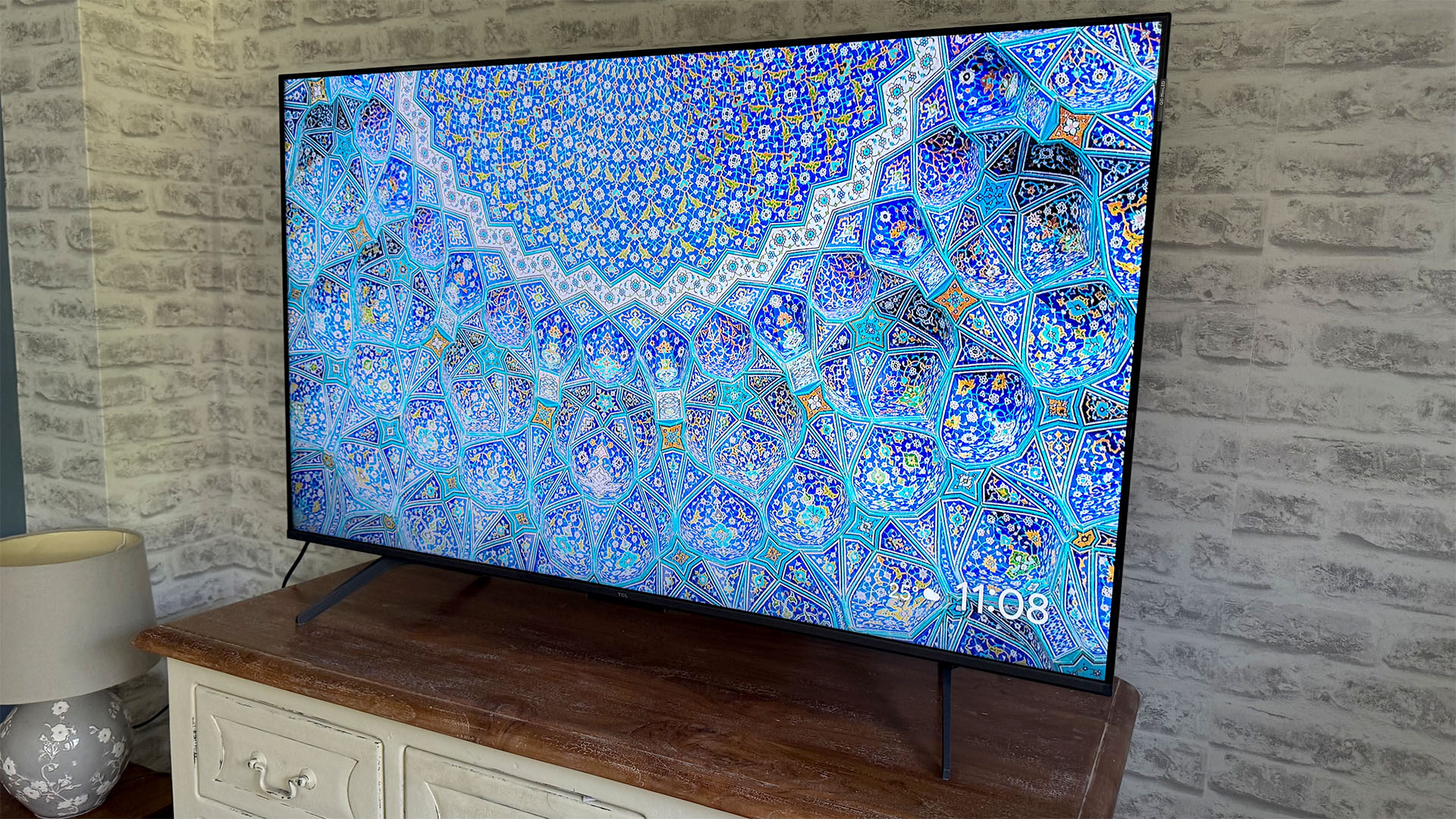
Screen size 50 inches (also available in 55, 65 and 75 inches)
Type Quantum Dot LCD
Backlight Mini LED (160 dimming zones)
Resolution 4K
HDR formats HLG, HDR10, HDR10+, Dolby Vision
Operating system Google TV
HDMI inputs x 3
Gaming features VRR, ALLM, Dolby Vision game mode
Input lag 9.9ms at 60Hz
ARC/eARC eARC
Optical output? Yes
Dimensions (hwd, without stand) 65 x 111 x 6.7cm
The two feet look a bit plasticky and basic, but their slender profile means they don’t significantly distract you from the screen above.
General build quality is heavy on the plastic, too. But you only really notice this when you’re handling the TV. It’s not obvious just from looking at it from a normal viewing distance.
The set isn’t the slimmest around the back, despite TCL optimistically describing it as having an Ultra Slim Design. But while this slightly deep rear doesn’t make the 50C6KS the most elegant wall-hanging TV option, you won’t notice its chunkiness when it’s sat on its feet unless you watch it from a pretty wide angle.
The C6KS’s remote control feels a bit lightweight, but its long, thin shape, angled rear and gently brushed front edge make it comfortable to hold. Its layout is fairly sensible as well, with good emphasis on the main navigation area and a helpful collection of buttons at the bottom for direct access to some of the most popular video streaming services.
Features
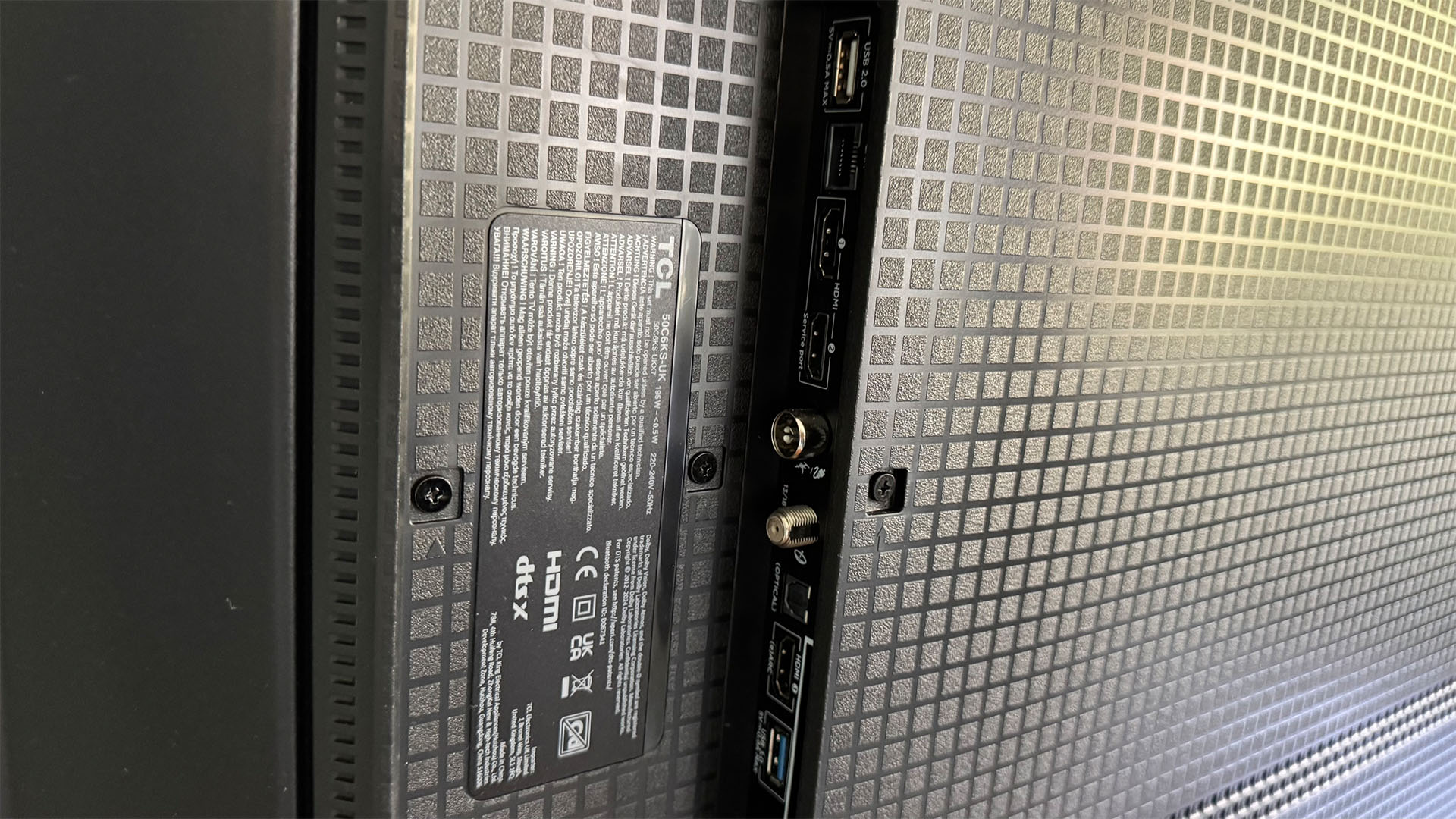
The 50C6KS’s price is arguably its single biggest feature; it’s ridiculously cheap for such a feature-laden and strong-performing TV. But this value component wouldn’t be so strong if its other features didn’t count, too, so let’s get stuck into them – starting with its Mini LED screen.
The Mini LEDs used to illuminate the C6KS are, as their name suggests, many times smaller than the regular LEDs used in most very affordable LCD TVs. This enables TCL’s TV to deliver, on paper at least, both more brightness and more localised light control. What’s more, the 50C6KS backs up its Mini LED lighting with 160 local dimming zones.
Getting any sort of local dimming on a TV this cheap is impressive enough, but getting three figures-worth of dimming zones is unheard of. Though, as ever, it’s not as much about the number of zones, but how they’re used, which we will of course get to in the picture quality section.
The good news continues with the discovery that the C6KS uses a VA-type panel rather than an IPS one – a panel choice that almost always results in better contrast.
In fact, it uses one of TCL’s new HVA panels, which brings a number of enhancements to the table compared with the brand’s equivalent 2024 models. These improvements include wider viewing angles and a suite of new ‘halo control’ innovations designed to minimise the strength and scope of the distracting backlight blooms and leaks that LCD TVs – especially those using local dimming – can throw up around bright highlights when showing HDR pictures.
These halo-reducing tricks include micro lenses in the optical array that are claimed to deliver almost a 19 per cent improvement in halo suppression, a 143 per cent backlight uniformity improvement, and eight times more optical stability.
There are also Quantum Dots in play to help the C6KS deliver a wider colour gamut (TCL claims coverage of 93 per cent of the DCI-P3 colour spectrum used for most HDR mastering) and more colour brightness than regular RGB filter systems can manage.
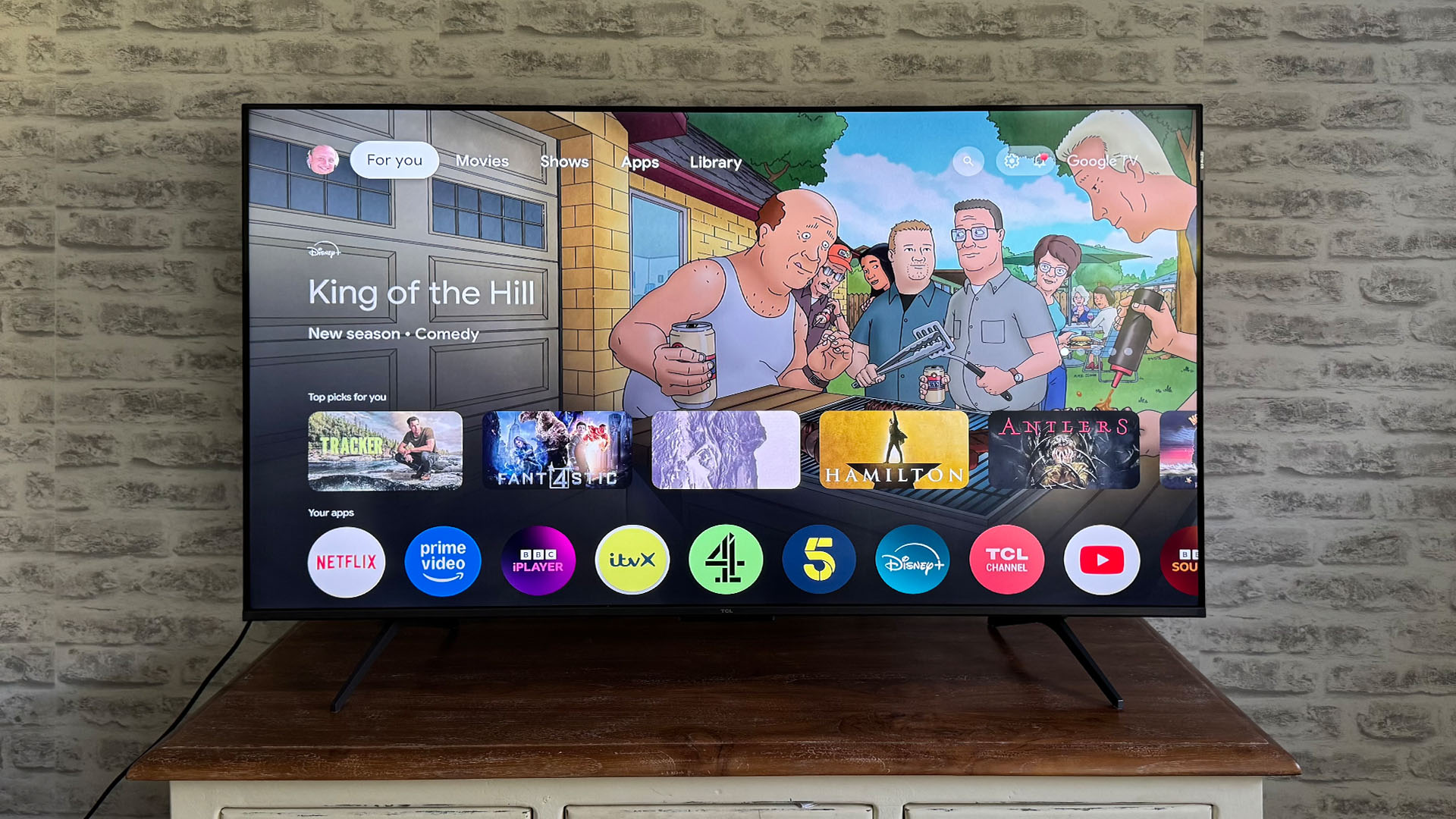
As noted earlier, the C6KS goes further than many TVs – including some far more expensive ones – in supporting all four of the main HDR formats currently used in the AV world: HLG, HDR10, HDR10+ and Dolby Vision. This means it will always play the best available version of any content you feed it.
This C6KS backs up/unlocks the full potential of its strikingly premium hardware features with TCL’s latest AI-boosted AiPQ processor, while hopes for its audio performance are bolstered by the fact that its 2 x 15W 2.0-channel speaker system has been designed with respected audio brand Onkyo, plus its ability to decode both Dolby Atmos and DTS HD soundtracks.
Smart features are delivered by Google TV, which brings with it the vast majority of the most popular global streaming services. TCL has also gone the extra mile, too, and brought on board separately all the catch-up apps for the UK’s key broadcasters – something Google TV doesn’t manage by itself. Though you don’t get the Freeview Play or Freely ‘umbrella’ apps for UK broadcasters that some other TVs provide.
The Google TV support does bring with it, though, the potential to operate the 50C6KS by talking to it courtesy of Google Assistant.
TCL has established itself as one of the best supporters of gaming on TVs over the past couple of years, so it’s not entirely surprising that even a TV as affordable as the C6KS carries such handy gaming features as TCL’s dedicated Game Bar onscreen menus, ALLM switching, support for the ultra-wide aspect ratios delivered by some PC games, the ability to raise the brightness of dark areas to reveal hiding enemies, and an aiming aid.
There’s even support for VRR – though only up to 60Hz. Yes, that’s right – we’ve stumbled across the one compromise TCL has had to make to keep the 50C6KS so affordable: its screen is a 60Hz one rather than a 100/120Hz one. But so are the screens of practically every other TV selling for around the C6KS’s price.
The 50C6KS’s connections are also marginally compromised versus TCL’s mid-range and premium models in that they only include three HDMI ports rather than four. There are a couple of media-capable USBs alongside those HDMIs, though, and in truth, three HDMIs is pretty par for the course at the sort of price level the C6KS hits.
Picture
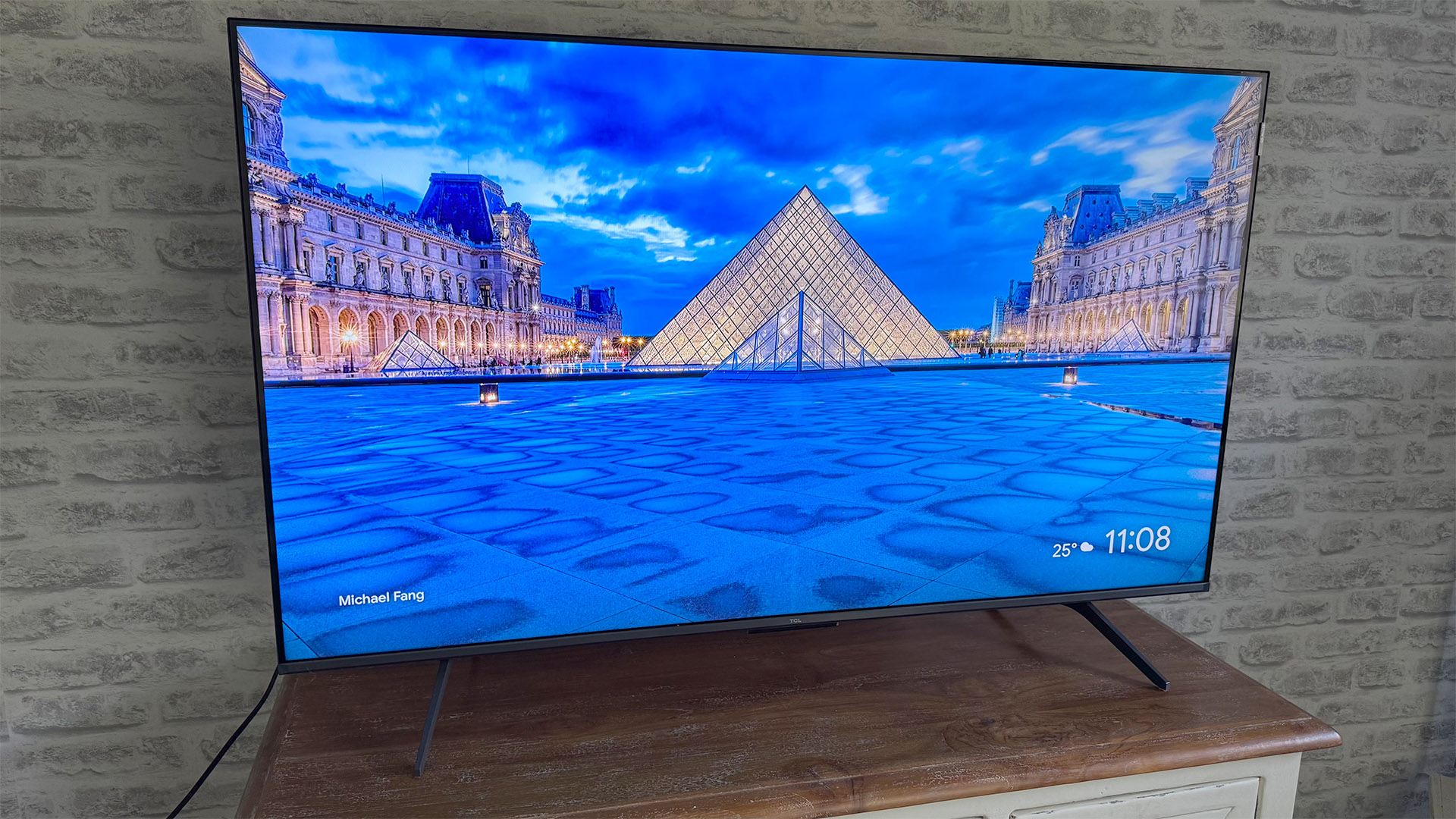
If there was a weak point in TCL’s mostly outstanding 2024 range, it was at the equivalent C6 level. The C6KS wastes zero time, though, in proving that TCL isn’t in the mood to make the same mistake twice.
For starters, there’s far less greyness in the 50C6KS’s dark scenes than there was with its predecessors. In fact, black levels are now excellent for a TV at this price point.
This is not just down to the new TV being better at manipulating light in dark scenes to produce deeper black tones, either. These improved black levels also appear to owe a debt to the new HVA panel at the C6KS’s heart, as revealed in particular by the way the screen typically manages to render such an impressive amount of shadow detailing in dark scenes.
The 50C6KS’s much-improved light engine creates precious few backlight blooming distractions either. Even on the rare occasions where a particularly tough, contrast-rich shot does reveal signs of backlight blooming around bright highlights, the halo of extraneous light is invariably faint enough not to count as a remotely serious distraction.
There’s no instability in the 50C6KS’s presentation of very dark scenes, either. We detect neither obvious signs of distracting mid-shot dimming zone adjustments nor any brightness fluctuations during cuts between light and dark shots. And unlike last year’s C6 model, fade to blacks don’t require an obvious ‘full switch off and subsequent full switch on’ of the entire backlighting system.
Making the C6KS’s much-improved handling of dark scenes all the more impressive is the fact that it’s achieved alongside some very impressive brightness for a TV so affordable. In fact, as well as looking two or three times as bright as other similarly priced reference sets we test it against, it gives a fair number of mid-range LCD TVs a run for their brightness money.
The brightness feels very organic to the 50C6KS’s picture, too, by which we mean that, as well as not generally straining the TV’s black levels and local dimming controls, it doesn’t cause the brightest colours to start looking faded or washed out.
The 50C6KS’s colours retain better saturations during very dark shots than we would expect to see with a TV at this level, too, while colour volumes (the combination of saturation and brightness) leave the vast majority of similarly priced TVs looking murky and flat by comparison.
That vibrancy does not come at the expense of subtlety, either. On the contrary, we’re pleasantly surprised by how much refinement and subtle toning the TV retains in areas that are notoriously tricky for affordable TVs, such as skin tones, blue skies, leafy trees and grassy meadows. Nothing feels clumpy or cartoonish.
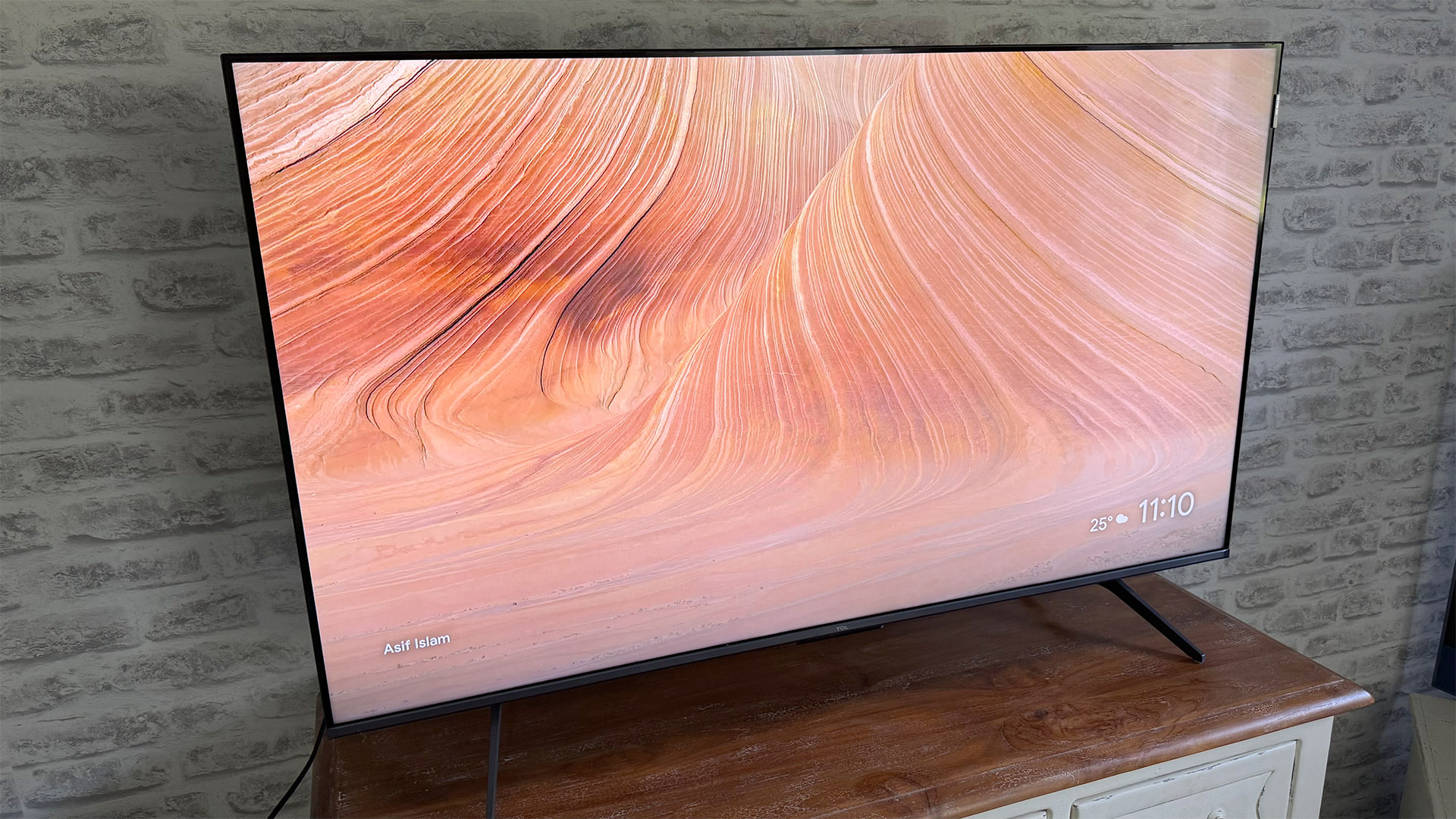
This has a knock-on effect on the C6KS’s sharpness, joining forces with the strong shadow detail performance to really convince you that you’re looking at 4K images despite this TV sporting a relatively small screen size by today’s standards. Our only warning here would be to not get too carried away with the TCL’s Sharpness Booster feature, as pushing this too high can start to exaggerate grain.
Despite not supporting 120Hz, the C6KS continues TCL’s long run of TV gaming form. The screen’s impressive core 4K sharpness is, if anything, even stronger with gaming graphics than video, while the impressive brightness and contrast for this price level feed into some really punchy game HDR – complete with excellent highlighting that adds to the sense of detail and texture.
Colours are slightly less vibrant in Game mode than they are in, say, the Standard video mode, but tones always look balanced and subtle.
Input lag is a super-fast 9.9ms, too, which is an excellent result by any TV standards.
Inevitably, for a 50-inch TV at this price, the C6KS isn’t perfect. For starters, there’s a little resolution loss over moving objects, especially with 24p movie sources. A few motion processing options are provided, but none of them fully removes the slight motion softness issue.
Next, while the 50C6KS generally handles its impressive brightness well, it can succumb to a little clipping (lost shading details) in some of its brightest highlights.
The Dolby Vision Dark setting, meanwhile, can track a little too dark, resulting in some slight loss of the shadow detail that the TV handles so well in its other picture presets.
We also find that, every now and then, an area of what should be subtle HDR colour blending can suffer from a mild banding effect, and there’s a slight drop off in colour saturation and contrast if you have to watch the screen from a wide angle.
Finally, you need to tweak a few things to get the best out of the 50C6KS. The default Dynamic Tone Mapping system for optimising HDR images to the screen’s capabilities can push highlights a bit high, for instance, so it needs toning down, while colours can look a bit cool out of the box, so you should use the colour settings to add a bit more warmth.
Plus, as we mentioned a moment ago, the default motion processing settings can be a touch heavy-handed.
We can’t stress enough, though, that while the 50C6KS isn’t completely issue-free and needs a little legwork to get the best out of it, there’s nothing in the negative column that’s anywhere near enough to stop this being a TV that spectacularly over-performs for its money.
Sound
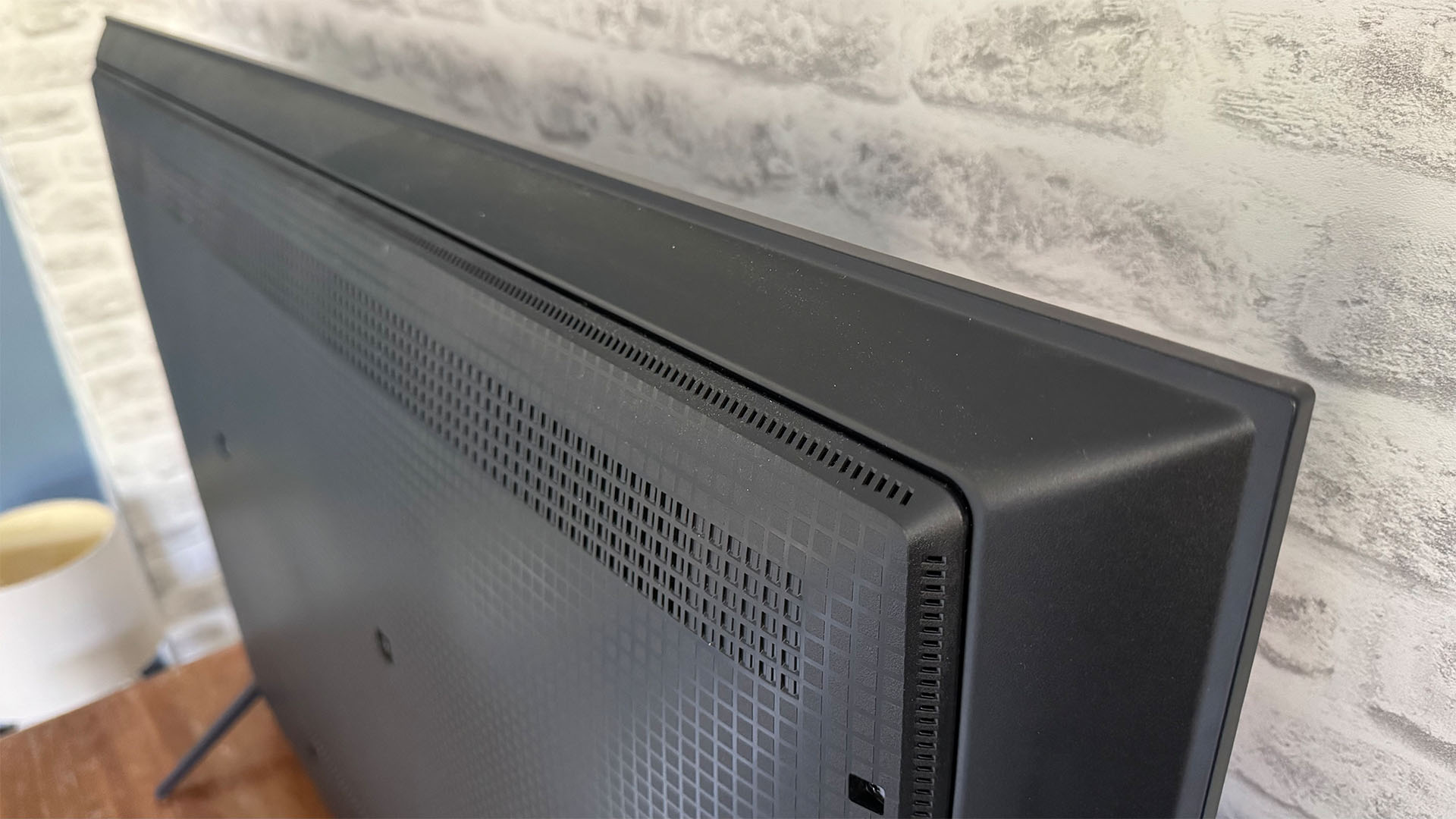
It’s nice to find a TV at this price level that supports both Dolby Atmos and DTS Virtual X playback – especially as the 50C6KS actually delivers these premium audio formats with more volume and power than expected without the sound breaking down or sounding coarse.
In fact, its sound is extremely detailed. We pick up subtle elements in some Dolby Atmos soundtracks on this TV that other models miss entirely – even many sets costing many times as much.
The sound is projected nicely out from the TV’s chassis, too, spreading comfortably to the left and right but also managing to sound as if it is being propelled forwards from the screen, despite the lack of any front-firing speakers.
The large soundstage combines with a knack for subtle sound details to place sound effects and handle sound transitions around the soundstage with good accuracy and conviction.
Dialogue is clear at all times, and sounds like it’s coming from the onscreen images rather than from speakers below or behind the screen. There are no distortions, buzzes, crackles or dropouts even at near maximum volumes, and there’s a surprising amount of treble headroom to help the TV handle shrill elements without making you wince.
While the freedom from buzzing and crackling issues extends to the 50C6KS’s handling of bass, though, this might in part be down to the fact that there isn’t actually much bass for the TV to handle.
The set’s midrange is reasonably open and expansive, but a lack of significant low-frequency heft can leave dense mixes sounding a bit lopsided in favour of the treble. This can cause a little over-brightness in the treble register and, more rarely, with dialogue.
Finally, while the 50C6KS sounds generally pleasingly punchy for such an affordable TV, its sound can slightly withdraw into itself when faced with Hollywood’s densest, loudest soundtrack moments.
As with its minor list of picture foibles, though, the 50C6KS’s audio limitations don’t stop it from sounding excellent overall for such an affordable TV.
Of course, it’s still not a patch on the sound quality of even the most affordable soundbars, so we recommend that you head to our best budget soundbars page to find a suitable sonic partner.
Verdict
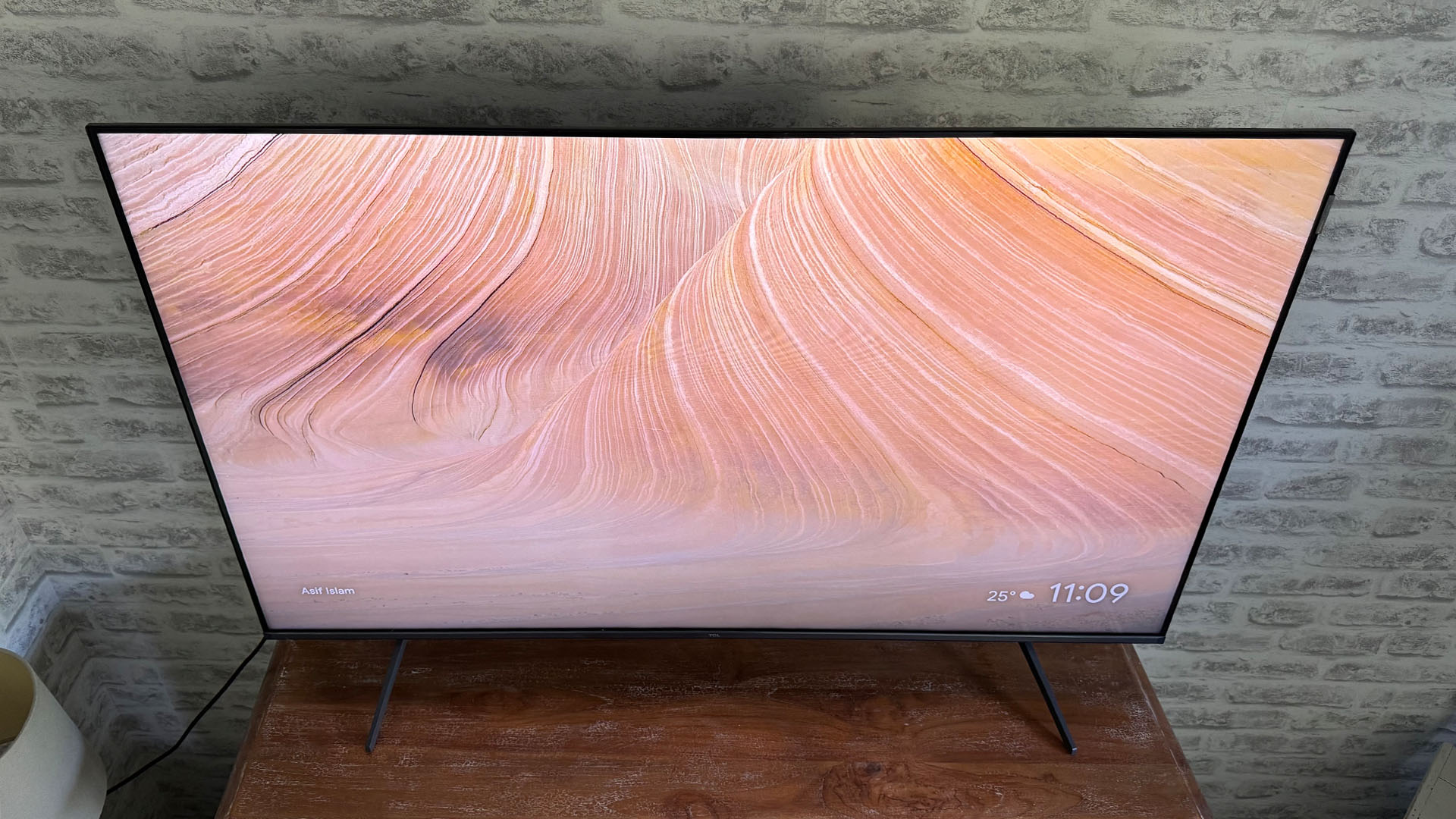
TCL’s latest ultra-affordable TV is even better than its specs suggest and fixes pretty much everything that was wrong with its predecessor.
The price seems like it must be too good to be true – but it isn’t.
SCORES
- Picture 5
- Sound 5
- Features 4
MORE:
Read our review of the Sharp 70GK4245K
Also consider the Amazon Fire TV Omni QLED
Best TVs: flagship OLEDs and budget LED sets tried and tested
John Archer has written about TVs, projectors and other AV gear for, terrifyingly, nearly 30 years. Having started out with a brief but fun stint at Amiga Action magazine and then another brief, rather less fun stint working for Hansard in the Houses Of Parliament, he finally got into writing about AV kit properly at What Video and Home Cinema Choice magazines, eventually becoming Deputy Editor at the latter, before going freelance. As a freelancer John has covered AV technology for just about every tech magazine and website going, including Forbes, T3, TechRadar and Trusted Reviews. When not testing AV gear, John can usually be found gaming far more than is healthy for a middle-aged man, or at the gym trying and failing to make up for the amount of time he spends staring at screens.
You must confirm your public display name before commenting
Please logout and then login again, you will then be prompted to enter your display name.
